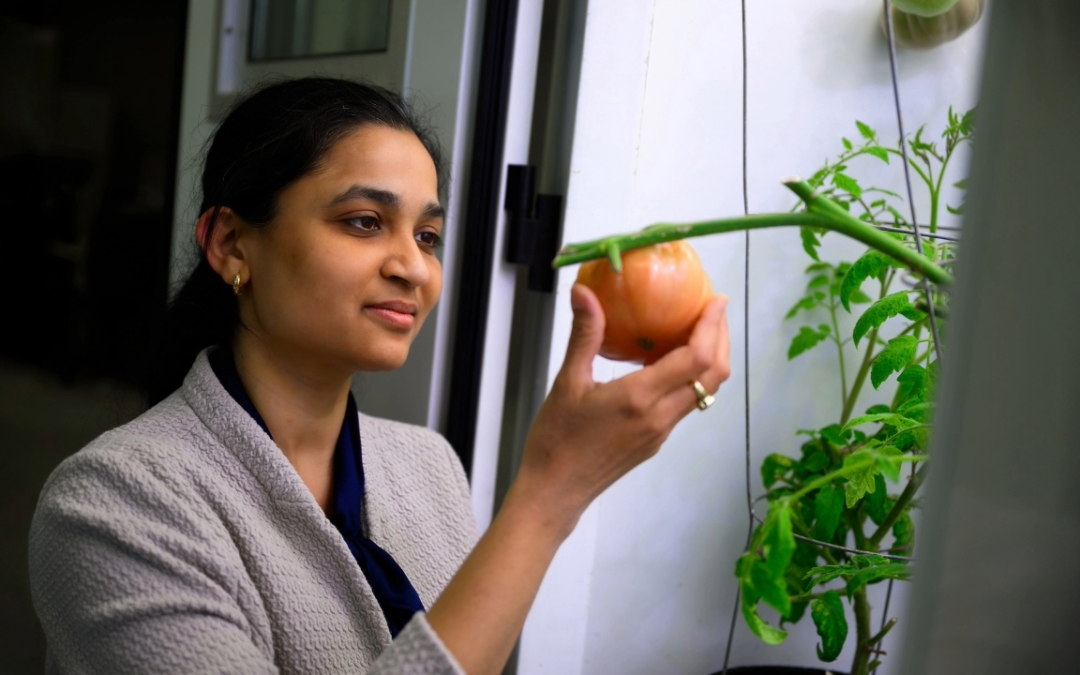AUBURN, Ala.—Research that Alabama Ag Experiment Station entomologist David Held is conducting in labs at Auburn is shedding new light on the secret lives of mole crickets, and his findings could eventually lead to improved strategies for controlling the costly pests.
Other than surfacing during the mating season, and then at night, mole crickets spend virtually all their lives underground, and thus the general public may not be familiar with the insects. But in southwest Alabama and, indeed, from the Texas Gulf Coast to Florida and now into the coastal Carolinas, the tunnel-digging mole cricket is the number one insect pest of turfgrass, inflicting serious damage on golf courses and sod farms and in lawns and pastures. And control is costly, from $70 to $140 per acre annually.
In the research, Held and David Bailey, a graduate student working on the project, have studied the insects’ tunneling behavior by way of 3-D models they developed using soil and 14-inch PVC pipes. Their experiments have uncovered new insights about mole crickets’ extensive tunnel systems and the tunnels’ impact on movement of water through soil plagued by mole crickets.
“Mole crickets have giant forelegs that they use to move through the soil, sort of like they’re swimming or doing the breaststroke, and that kind of sweep means the tunnels they did actually are two to three times bigger than the insects themselves,” Held said. “They’re also displacing significant amounts of soil, from 1.7 to 7 ounces per insect in about a week of tunneling, and that is creating large spaces all through the soil.”
The tunneling research also has scientifically confirmed the general assumption that mole crickets prefer sandy loam soils to clay, but it has challenged scientific anecdotes contending that tunnels created by immature mole crickets are not permanent or are not as extensive those dug by adults.
“We found no difference in the tunnels made by adult and immature mole crickets, except that adults’ tunnels are wider in diameter and slightly longer,” Held said.
Held’s work on mole crickets’ tunneling behavior is part of a larger National Science Foundation–funded project in which he, former College of Ag soil physicist Navin Twarakavi and Auburn environmental engineer Prabhakar Clement are investigating how mole crickets and their subsurface tunnels impact soil-water interactions, primarily infiltration, runoff and the movement of contaminants through the soil.
In a separate but related study funded in part by the Alabama Turfgrass Research Foundation, the Auburn scientists also have challenged assumptions regarding the feeding habits of mole crickets. In essence, Held and entomology graduate student Yao Xu found that while the insects do eat plant roots, stems and leaves, they prefer protein.
“Grass is convenient for them, and they can sustain themselves on it, but they incorporate a great deal of meat into their diets,” Held said. And in dietary tests in which one group of mole crickets was fed protein only, another protein and plants and a third plants only, the protein group grew significantly larger and faster than the other two groups, especially the one on the meatless diet. That knowledge is valuable in continuing efforts to control the pests.
“Pesticides used to be broad spectrum, where they basically got rid of all the insects in the soil, but now they’re more specific,” Held said. “That means there are a lot more insects in the soil than there used to be, and that gives mole crickets a lot more meat to feed on.”
The two mole cricket species that plague the Gulf Coastal Plain are the Southern and the tawny. Adult mole crickets range in length from 1 to 2 inches, and though they do feed on and injure managed turfgrass and pastures, it’s their tunneling behavior that causes the most significant damage, reducing the aesthetic quality and health of turfgrass and, on golf courses, interfering with the roll of the ball.
Mole cricket infestations are usually spotty and localized. The visible signs of damage are irregular raised mounds or ridges of soil and dying grass.




